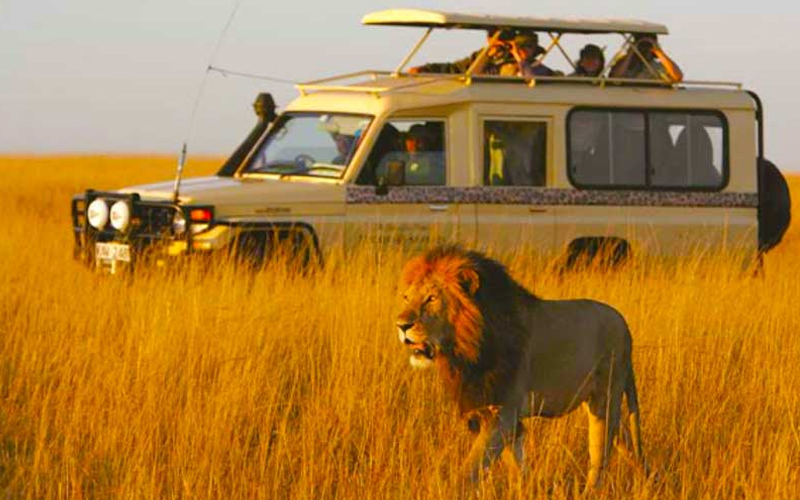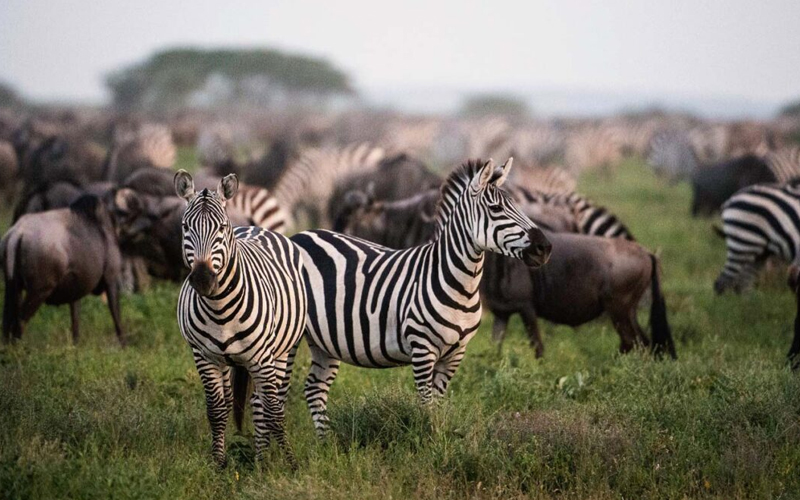Embarking on a safari in Tanzania isn’t just a trip—it’s an epic journey into the heart of wild Africa, where nature’s rhythm guides the dance of life itself. From the endless plains of the Serengeti to the awe-inspiring Ngorongoro Crater, Tanzania’s wilderness pulses with a vibrant tapestry of wildlife, creating a living masterpiece of the natural world. Here is how you plan your safari and when is the best time to visit Tanzania:
Plan Your Safari
Planning a safari in Tanzania requires careful consideration of various factors to ensure a memorable and smooth experience. Here’s a step-by-step guide to help you plan your safari:
- Define Your Goals and Preferences:
- Determine what wildlife you want to see (e.g., the Big Five, Wildebeest Migration).
- Decide on the type of safari experience you prefer (luxury lodges, tented camps, budget camping).
- Consider other activities you might want to incorporate, such as hot air balloon rides or cultural tours.
- Choose Your Destinations:
- Tanzania offers several world-renowned national parks and conservation areas, including Serengeti, Ngorongoro Crater, Tarangire, Lake Manyara, Ruaha and Selous Game Reserve.
- Research each destination’s unique features, wildlife, and landscapes to tailor your itinerary according to your interests.
- Select the Right Time to Visit:
- Consider the best time to visit based on weather patterns, wildlife movements, and your personal preferences (as discussed earlier).
- Keep in mind that peak seasons may have higher accommodation rates and more crowds.
- Set Your Budget:
- Determine your budget for accommodation, transportation, park fees, meals, and additional activities.
- Decide whether you prefer a budget-friendly or luxury safari experience, and allocate funds accordingly.
- Book Your Accommodation and Transportation:
- Research and book accommodations in advance, especially during peak seasons, to secure your preferred lodges or camps.
- Arrange transportation, whether it’s through a tour operator offering safari packages or self-driving with a rented vehicle. Ensure the vehicle is suitable for safari conditions.
- Consider Hiring a Safari Guide:
- Hiring a knowledgeable safari guide can greatly enhance your experience by providing insights into wildlife behavior, local culture, and navigating the wilderness safely.
- Ensure your guide is certified and experienced in the areas you plan to visit.
- Prepare Necessary Documents:
- Obtain necessary travel documents, including passports, visas (if required), and permits for specific activities or parks.
- Ensure you have comprehensive travel insurance that covers medical emergencies, trip cancellations, and evacuation.
- Pack Appropriately:
- Pack lightweight, breathable clothing in neutral colors for safari outings.
- Bring sturdy, comfortable walking shoes, a wide-brimmed hat, sunglasses, sunscreen, insect repellent, and a good camera with extra batteries and memory cards.
- Consider packing binoculars and a field guide for wildlife spotting and identification.
- Educate Yourself:
- Familiarize yourself with wildlife behavior, safety guidelines, and responsible tourism practices to minimize your impact on the environment.
- Learn about the local culture and customs to respect and interact appropriately with the communities you encounter.
- Stay Flexible:
- Wildlife sightings can be unpredictable, so maintain flexibility in your schedule to adapt to changing conditions or opportunities.
- Embrace the serendipity of safari adventures and enjoy the natural beauty of Tanzania.
By following these steps and thorough planning, you can ensure a fulfilling and unforgettable safari experience in Tanzania.
Best Time To Visit Tanzania
Planning a safari in Tanzania is exciting! The best time to visit depends on what you want to see and experience. Here’s a breakdown:
- Dry Season (June to October):
- Best for Wildlife Viewing: During these months, animals tend to gather around water sources, making them easier to spot. The vegetation is also thinner, offering better visibility.
- Great for the Great Migration: Witness the incredible spectacle of the Wildebeest Migration in the Serengeti, usually occurring from June to August.
- Green Season (November to May):
- Lush Scenery: The landscape is vibrant and lush after the rains, making for stunning scenery and great for photography.
- Fewer Crowds: As this is the low season, you’ll encounter fewer tourists, allowing for a more intimate safari experience.
- Bird Watching: This is an excellent time for bird watching as migratory birds flock to Tanzania during these months.
- Rainy Season (March to May):
- Lowest Tourist Numbers: This is the least busy time for tourism, so you can enjoy the parks without crowds.
- Greenery: The landscape is at its greenest and most beautiful during this time.
- Special Rates: Some lodges offer discounted rates during the rainy season.
Considering these factors, the best time for your safari depends on your preferences. If you want to witness the Great Migration in Serengeti, June to October is ideal. For fewer crowds and lush landscapes, consider visiting during the green season. However, keep in mind that the roads might be more challenging to navigate during this time.







Leave A Comment